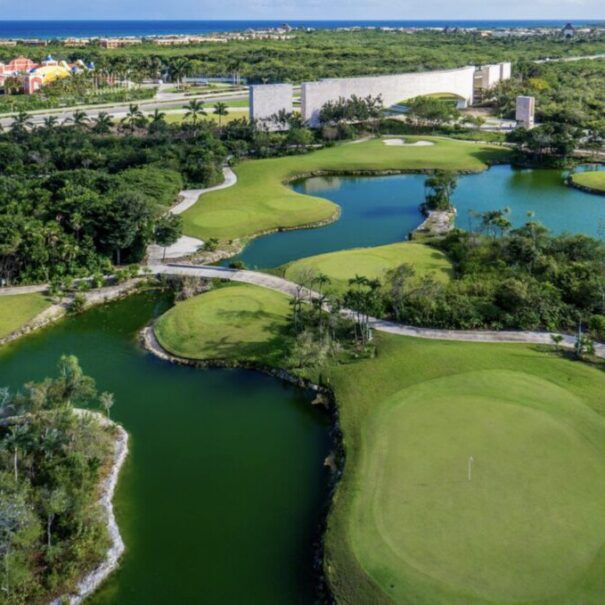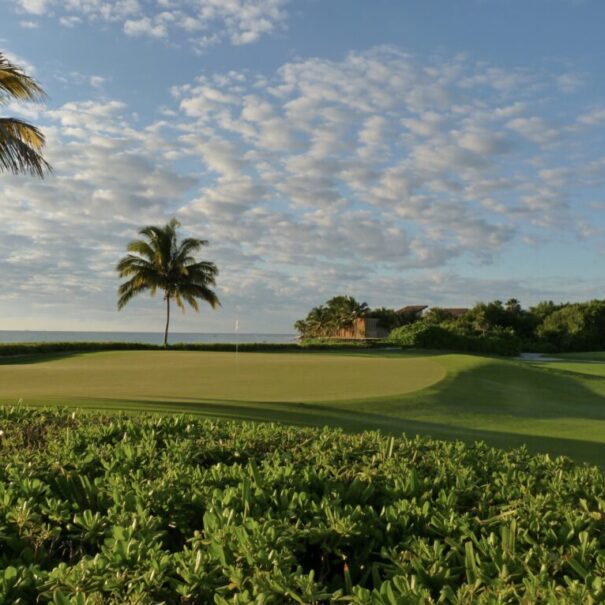-
MÉXICO
-
MÉXICO
-
MÉXICO
Everything You Need
Thinking of teeing it up in Mexico in the near future? Raise a glass of tequila to William Townsend while you’re there. For it was the Kentucky native who moved to Mexico and helped found that nation’s first golf club in 1897, San Pedro, a nine-hole layout on a barren patch of land in Puebla, southeast of Mexico City. Today there are an estimated 200 courses across the country, although three regions attract the vast majority of the golf tourist crowd: Baja California Sur (particularly Los Cabos), Puerto Vallarta/Riviera Nayarit and the Riviera Maya. The latter area skirts the Yucatán Peninsula coastline along Highway 307, running roughly 80 miles from the vibrant, pulsating town of Cancun in the north, past Playa del Carmen in the south to the ancient ruins of Tulum.
México
If you’re into some really ancient ruins, though, consider a 170-mile drive west of Cancun, around the top of the Yucatán Peninsula to the tiny town of Chicxulub Puerto, where a 7.5-mile-wide asteroid slammed into the shoreline roughly 66 million years ago, killing the dinosaurs and about 75% of life on earth. There’s even a Jack Nicklaus design there, the Yucatán Country Club, although none of its bunkers quite compare to Chicxulub’s 12-mile-deep, 93-mile-wide crater.
Intriguing tourist site? Absolutely. But if you have golf clubs in tow, you’ll want to look south from the hotel zone of Cancun. For packed onto that grand strand of sand are 14 world-class golf courses, the architects of which include legendary names like Jack Nicklaus, Pete Dye, Greg Norman and Tom Weiskopf. Easily accessed from Highway 307, most feature much flatter terrain than you’ll encounter in the more mountainous Baja California Sur on Mexico’s west coast. As opposed to rugged desert, in Riviera Maya it’s mangroves and jungle foliage that will swallow wayward shots.



The region is easily accessed. Even from major gateways like New York and Chicago, it’s less than a four-hour flight to Cancun International Airport.
But visitors should take note of a couple things upon arrival. First, while you’ll probably be reminded of this fact while receiving the form on board your flight, do not lose the bottom portion of the green-red-and-white Forma Migratoria Múltiple (commonly known as a tourist card), which gets returned to you when you go through customs — otherwise it’ll cost you around $40 for each missing form in your group when you depart.
And you have to pay in cash! Second, expect to encounter a gauntlet of would-be porters looking to carry your luggage to your taxi, shuttle or rental car. These tip-seekers are ubiquitous and tend to be aggressive.
México Packages
- Sorry, this product cannot be purchased.

